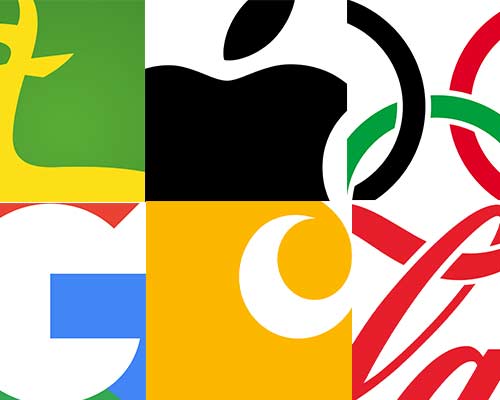Insight
Top 10 Marketing Trends
to Budget for in 2023
I know, I know, it feels weird to have to think of 2023 already, much less the frustration of budgeting. It’s hot outside, like really hot, and in your mind you’re poolside, not focusing on next year… or maybe you’re ready if that means cooler temperatures? But alas, time never stops and if your fiscal year runs on an October-October calendar, then I hate to be the barer of bad news, but it’s past time to make sure those budgets account for marketing trends to invest in in 2023.
It should come as no surprise most of these trends are digitally focused, but that doesn’t mean these can’t or don’t integrate with your analog and traditional marketing efforts. If anything, they should amplify each other for a cohesive overall marketing strategy.
So, let’s get into the marketing trends you definitely need in your 2023 budget.
1. Social Media
But you’re already invested in social, on multiple platforms? Great! But when is the last time you looked at what you’re investing in social vs. your ROI? Consider all the “jobs” an effective social media presence encompasses – from serving as your company’s digital billboard, to search engine results, customer ratings, reviews, customer service, sales promotion, brand awareness and so much more. Ask yourself what each area is worth to your business. A recent study found the average user of social media spends 2.5 hours a day on social platforms. What is it worth to your brand to be directly in front of your audience and hold their attention? With the rapid pace social media changes and trends emerge, your budget needs to reflect the value social media brings your brand.
2. Analytics
Maybe you already get monthly or quarterly reports. And while these reports often include metrics, it’s important to invest in analyzing and adding context to the numbers of metrics. Digital marketing analytics translate audience behaviors and actions we calculate with metrics into actionable business data you can address tactically. Without analysis, your numbers don’t have value and they can’t help tell the story of what your digital campaigns are doing, but more importantly, they can’t tell you why your audience is behaving a particular way, and you can’t make strategic adjustments for your audience’s experience. Is your conversion rate low even though your campaign is showing good reach and impressions? It’s time to invest in WHY and evaluate where you need to make changes for better ROI. Just as mentioned above how important it is to invest in the value of social media for your brand, without detailed analytics and strategy, you don’t have a clear picture of where you should be investing the most energy.
3. Email
Why does it feel like this is on the list of marketing strategies you need to invest in every year? Because while email and email marketing isn’t new, too many brands miss investing in a strategic email campaign. Privacy changes, fewer ways to track your audience online and reach them on social media… you name it and its never going to be easier to speak directly with your audience(s) than directly in their inbox. According to Constant Contact, the average ROI for email marketing is $36 for every $1 spent. There isn’t a digital platform that improves your communication and awareness, decreases sales funnel touchpoints, and increases conversion rate while also boosting click-throughs and website traffic for 36 times greater than your investment. So, the question is, what are you doing to capture emails, communicate with your audience and convert them? If the answer is not enough, then your 2023 budget needs to include a solid email campaign strategy and launch.
4. Influencer Campaigns
It’s everyone’s favorite moniker lately: influencer. I hear you, there’s something that feels disingenuous in what “influencer marketing” has become lately. But the facts are, influencer marketing isn’t new, and it works. Instead of investing in customer testimonial photo and video shoots of the days of big splashy traditional advertising production, in 2023, customers want authenticity. And that authenticity comes from the ones who have influence. Call them content creators, influencers, ambassadors, whatever label works for you, but make sure influencer marketing is working for your brand in 2023. And due to the popularity of it and ROI, your budget needs to account for working with influencers – as in paying them. Additionally, your budget needs to account for an influencer strategy to make sure you’re investing in the right influencer for your brand. Some data suggests influencer marketing can deliver 11 times the ROI over digital banner ads alone. The bottom line, the right influencer already has your audience’s attention and trust – it’s just good business to build off that.
5. Personalized Experiences
The days of one-size-fits-all marketing campaigns are over. To be honest, they were over a while back, but as more momentum builds for Web 3.0 and social media feeds become more niche with increased total users, the need to provide personal connection online is growing. It’s no longer set your campaign up and let it run, but now it’s about tapping into each audience segment on a more granular level to capture their attention and speak directly to them. You’ll need to create distinct campaigns that address various audience segments rather than a lump sum. As users gain more tools to customize their feeds and the type of content they want, along with having the ability to prevent tracking and increased privacy, there’s a high probability they aren’t even listening to you unless you’re getting to the core of what drives them and directly answering their individual pain points. Just as Millennials and Gen Z are into “experiences and not things” more than previous generations, that same mindset carries over into their digital behaviors with what they connect and interact with.
6. Audio and Voice Search
Let’s talk audio! (pun intended) There is distinct and clear growing consumer demand for audio content – on multiple platforms. The podcast boom hasn’t busted yet, and while it’s continuing to show sustained growth, streaming and audio brands continue to boost their popularity as well. Rapid smart-speaker adoption and voice-assistant is fueled by both those who still commute to the office, and those who work remotely. More than 39.3% of Millennials, 25% of Gen Z and 10% of Baby Boomers use voice assistant-enabled devices in the US – more than 1/3 of the population. The bottom line, audio ad automation is taking over and it’s another value-driven way to reinforce messaging.
7. Augmented and Virtual User Experiences
The pandemic showed us we can still do a lot virtually. It also opened doors on ways to provide experiences without physically being together. A constant trend from consumer surveys is their desire to connect to brands, gain insights and transparency, and have experiences. Maybe you can’t invite the world to physically tour your office, warehouse, clinic, facility, farm or lab; but you can invite them in virtually. Immersive experiences will also grow with Web 3.0, so don’t wait until every other brand is offering virtual tours and behind the scenes to think about it, jump in now. Visually tell the story of how your product or service goes from concept to your customer.
8. Video Content
It’s all about the video – long form, short form, cameos, reels… the list goes on. If you want to be in front of your audience and increase your reach, the algorithms don’t lie, you’ve got to be using video in your media arsenal. And the beauty of digital and social video is you don’t have set up a super-polished, expensive video shoot. Professional videos have their place and absolutely are needed for brand visual assets, but they can easily be complemented with cell phone video. Most of the latest cell phone models are designed to capture quality video with the intent of sharing it online. If your asset library is lacking video content, your budget absolutely needs to include capturing more in 2023. And going beyond capturing, to keep your library fresh, a monthly budget should be set aside to continually update and edit raw footage to get the most out of your investment.
9. Brand Partnerships
2023 will be the year of brand partnerships; who will you partner with? There’s no better way to grow your reach and brand awareness to a specific target audience, than combining forces with another brand who can add value to your community. For too long brands have operated in silos, but their audience doesn’t. Brands invest in strategic audience profiling that outlines their target audience’s interests and traits… but why don’t enough brands look for opportunities of overlapping interests? Some of the most successful campaigns in 2022 were the partnering of 2 major brands to add value to an overlapping audience. If your budget includes brand awareness, as it should, then realign that brand awareness strategically and look for ways to amplify with a brand partnership.
10. Omnichannel Marketing
Lastly, but not least, your 2023 marketing budget should account for omnichannel marketing. Each of these trends mentioned are intended to integrate and offer a seamless brand experience, regardless of how your audience/customer interacts with you. Your brand tone, voice, messaging and content should provide a positive and consistent experience on each level. There’s a reason each of these roll up into one marketing budget – they’re meant to be together and not stand alone. To really make sure you have a true omnichannel approach to marketing, you need to invest a good strategy that incorporates all the elements of your marketing budget. Social media channels shouldn’t be in a silo and operate on their own while print campaigns hold their own strategy and branding session – every campaign should work together.
Times are changing, and in a fast-paced world and one must keep up or get left behind. Regardless of your budget there are trends your brand can invest in to make sure your brand stays ahead. The takeaway is, don’t just set a budget, set specifics with it to help keep your brand current and in front of your audience.




